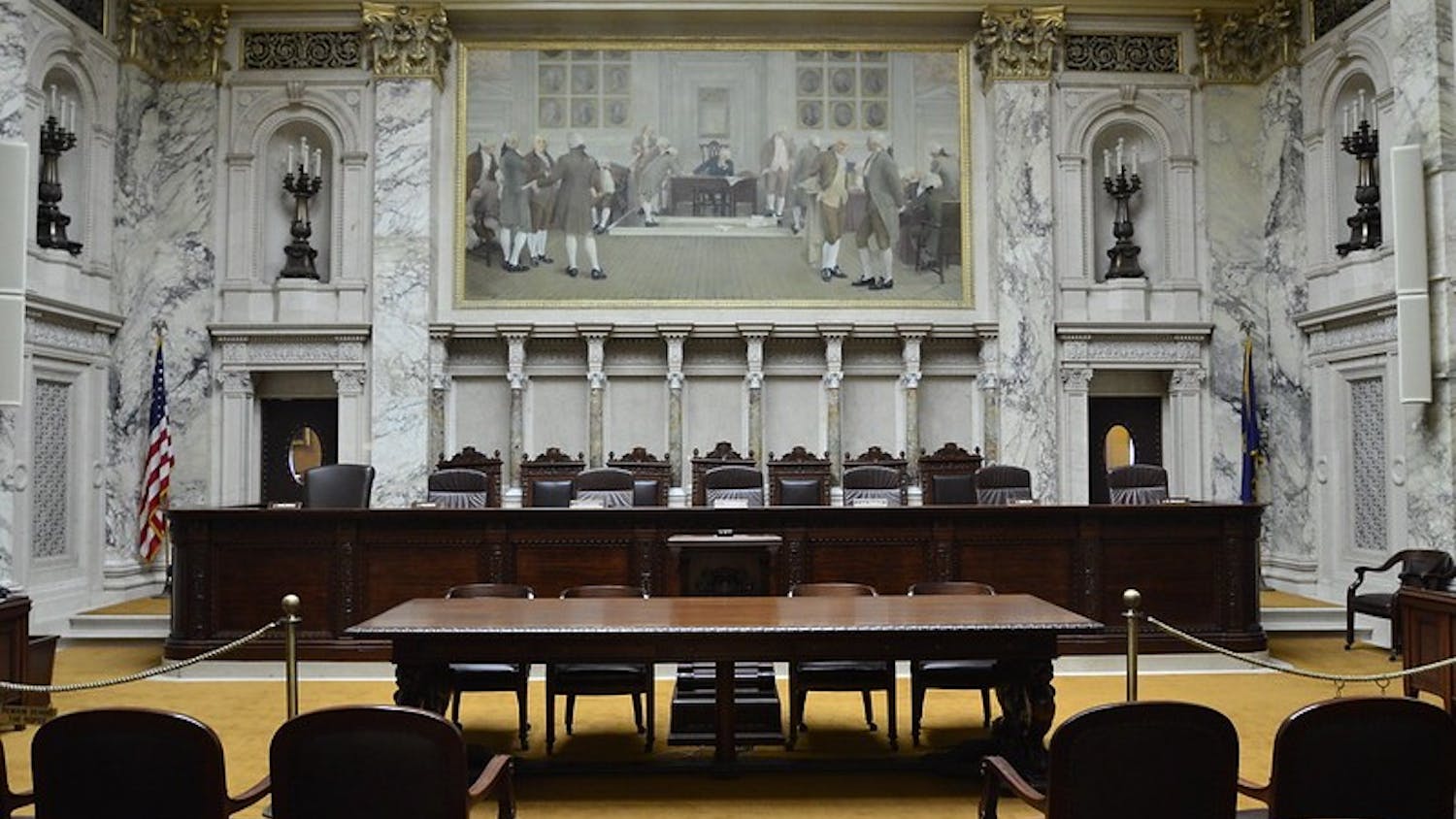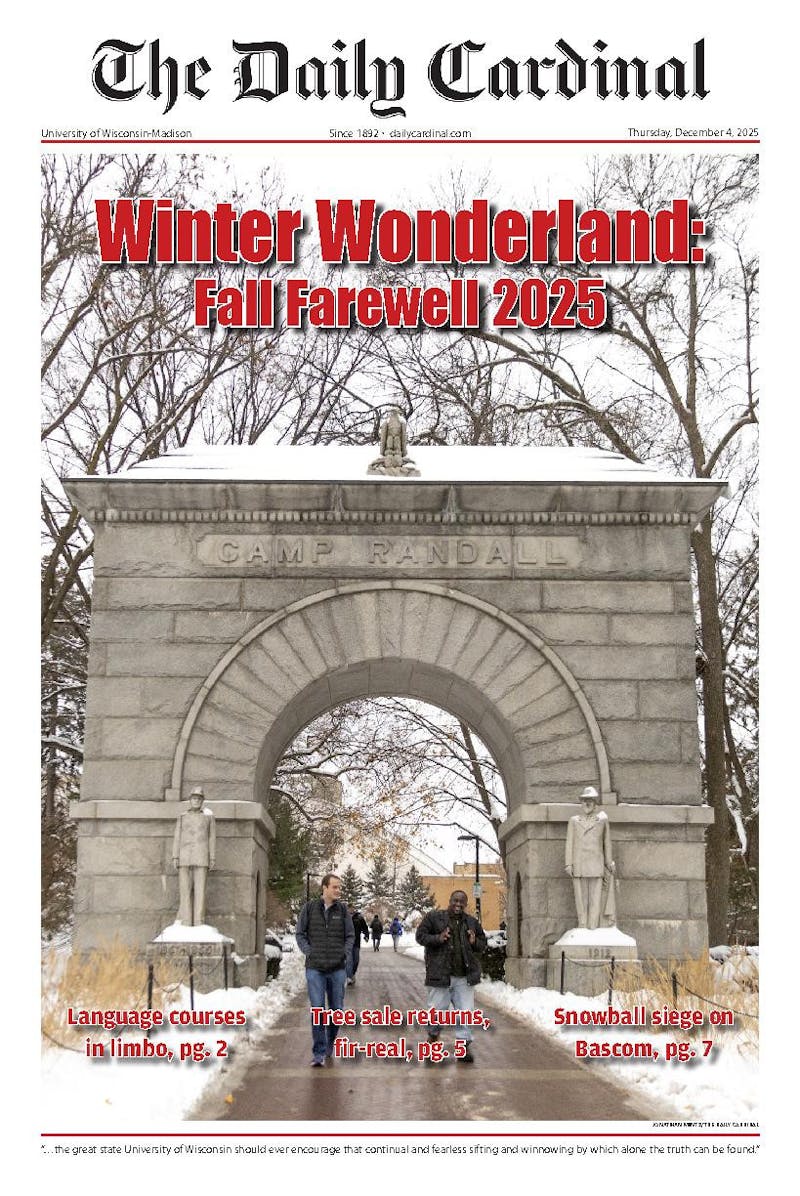Twelve diners squeeze around three sides of a table in a small back room of the restaurant. On the fourth side of the table the chef emerges from behind a curtain with a knife holster around his waist. He tosses a handful of shrimp on the flat grill before him and spins his knife, and the show begins.
In a flash of accuracy and dexterity, the cook slices each shrimp and flips the tails into his front pocket, behind his back into an empty water glass. He continues to impress the diners with spinning knives, three-foot flames and juggling pepper shakers.
\It's fun'going in front of the customers, showing your skill, communicating with the customer,"" Ken Hashimoto, co-owner and hibachi chef at Ginza of Tokyo, 6734 Odana Rd., said.
In Hibachi-style (also known as Teppanyaki) cooking, diners sit around a flat steel grill where the chef prepares steak, chicken, seafood and vegetables. The show in this type of cooking is as important as the meal, as the chef entertains diners with slicing, dicing and flipping the food, manipulating fire and juggling items such as onions, pepper shakers and in some cases, knives.
""Yes, I have had mistakes. Many chefs have cut their hands or burned their fingers because they work so close to the grill ?? but I have had no injuries in front of customers. Only in practice,"" Hashimoto said. Hibachi chefs normally learn their skills at restaurants where they train while doing more basic duties in the kitchen, and after about a year graduate to the hibachi tables.
Ginza of Tokyo is an independently owned Madison restaurant and one of a firestorm of hibachi-style restaurants to sweep across the United States since this hybrid of cooking and showmanship arose in the mid-'60s. Despite their Japanese influence, Hibachi-style restaurants first began in America.
Rocky Aoki, a former member of the Japanese Olympic wrestling team, opened the original Hibachi-style restaurant, Benihana of Tokyo, in New York City in 1964. The popularity of Aoki's theatrical style of cooking exploded, and today Benihana is a chain of over 50 restaurants scattered throughout North America, South America, Europe, Asia and Australia.
Hibachi-style restaurants have also made their way back to Japan. They are, however, far smaller and more expensive than their American counterparts, Hashimoto said.
""They are very high-class restaurants, and there are not as many [in Japan],"" he said.
He credits America's greater abundance of beef, a main ingredient in hibachi cooking, to the greater popularity and accessibility of these restaurants in the United States.
Hashimoto, who previously cooked French cuisine at a Tokyo hotel, began his career as a Hibachi chef at Ginza in 1979. He moved to a restaurant in Chicago in the mid-'80s, but returned to Ginza to become a co-owner in 1998.
The restaurant's good shows and great food appeal to a wide range of customers, from college-aged to middle-aged to families and children.
As his baby daughter stared at a flaming-onion volcano with wide-eyes, Dave Cedergren of Madison said, ""I like to bring my out-of-town guests here. They're always impressed. It's a good place for families, for kids.""
The food and the show also impressed first-time diner Russell Beyer of Anoka, MN, but he found the setting somewhat crowded.
""It was enjoyable watching the food cook tableside, but I would have liked more space,"" said Russell, whose chair was wedged in at the corner of the table.
Crowding has been a problem'or a blessing'from Ginza's beginning. On weekends, getting a seat is nearly impossible without making reservations. The west side business has done so well that the owners are anticipating the opening of a second and larger east side location this December. Hashimoto says the restaurant has drawn crowds from the start.
""When it opened in 1979, it was jam-packed everywhere. It was something different ' people wanted to know what was going on,"" he said.
Now the people know what's going on, and appear to like it.





